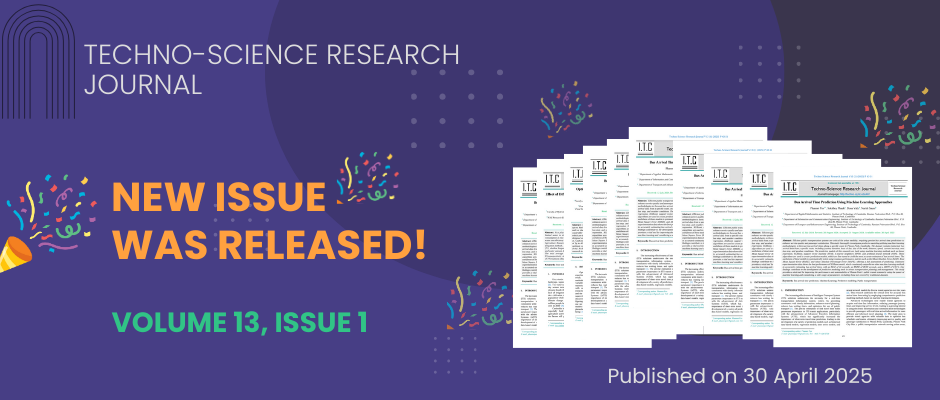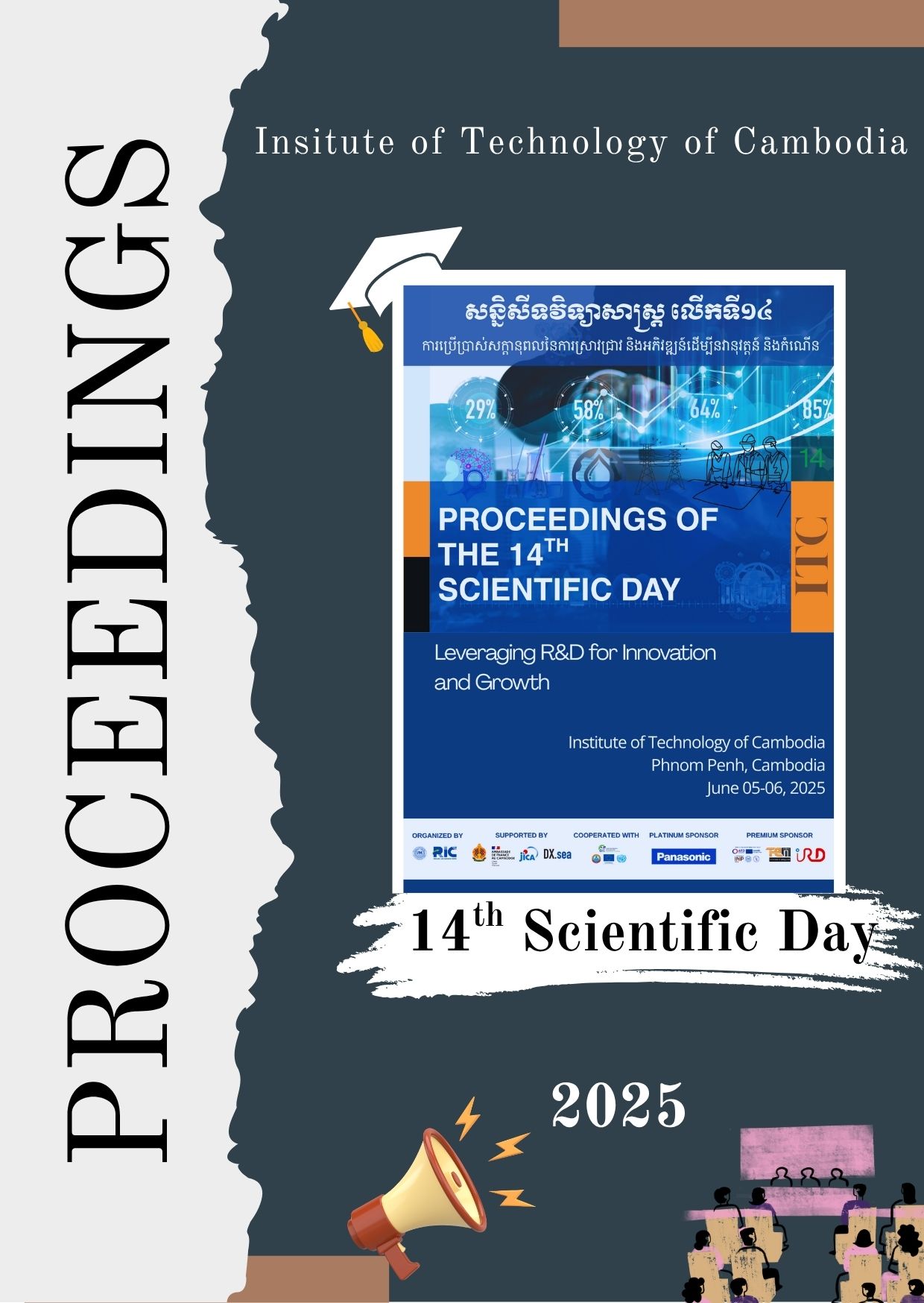Latest Issue
Empowering Education with Online Khmer Handwritten Text Recognition for Teaching and Learning Assistance
Published: August 30,2025Undergraduate Student Dropout Prediction with Class Balancing Techniques
Published: August 30,2025Status of Seawater Quality at Koh Rong Island, Sihanoukville, Cambodia
Published: August 30,2025Low-Complexity Detection of Primary Synchronization Signal for 5G New Radio Terrestrial Cellular System
Published: August 30,2025Word Spotting on Khmer Printed Documents
Published: August 30,2025Tuning Hyperparameters Learning Rate and Gamma in Gym Environment Inverted Pendulum
Published: August 30,2025Examining Passenger Loyalty in Phnom Penh Public Bus System: A Structural Equation Modelling Approach
Published: August 30,2025Prediction on Load model for future load profile of Electric Vehicle charging demand in Phnom Penh
Published: August 30,2025Economic Study on Integrating PV-DG with Grid-Tie: Case Study in Cambodia
Published: August 30,2025Recent Articles
The Khmer script presents a unique challenge due to its distinct characters, which make recognizing handwriting especially challenging. This study tackles this challenge by creating a specialized computer program that recognizes handwritten Khmer text. Our goal is to enhance Khmer language education by offering a valuable tool that supports educators and students in improving their Khmer language proficiency. This user-friendly tool improves hand
This study investigates how machine learning (ML) and deep learning (DL) techniques can be used to predict student dropouts, which is a major issue for higher education institutions. Using a dataset from Kaggle titled “Predict students’ dropout and academic success,” we analyzed data from 4424 students across 17 undergraduate programs. We used 35 different attributes for each student’s profile, which gave us a strong basis for our predictive mode
Marine water quality can be good or bad depending on the presence or absence of different components. The delicate underwater ecosystem risks collapsing when the chemical run-off contaminates the ocean. Increased levels of chemicals can lead to toxic algal blooms, threatening the safety of marine life. Even minor damage to an ecosystem can have larger repercussions, as the harmonious balance becomes disturbed. Therefore, this study aimed to deter
5G mobile communication is based on three main pillars: enhanced mobile broadband, massive machine-type communication, and ultra-reliable low latency. For a mobile station (MS) to connect to a 5G network and access user data, it must first perform cell identification during the initial stage before establishing radio and network connections. This is done using the primary synchronization signal (PSS) and secondary synchronization signal (SSS) sen
Word spotting in Khmer printed documents presents a unique challenge due to the complexities of the Khmer script and the vast array of font styles employed. The scarcity of large, publicly available datasets further complicates this task. This work proposes a two-module approach for achieving accurate and efficient word spotting in Khmer documents. Separate datasets are utilized for text detection and recognition. The first module employs the sta
Abstract: In this paper, reinforcement learning, as a subfield of artificial intelligence and machine learning, is examined based on its capacity for interdependent statistics, optimization, and mathematical concepts and how agents can use trial-error learning to solve tasks. Furthermore, fine-tuning of parameters in machine learning is the ability of scientists to directly influence the architecture, usability, and effectiveness of models in fin
Public transportation in Phnom Penh, Cambodia has undergone significant changes in recent years, with daily ridership increasing from 7,000 at its reintroduction in 2014 to about 20,000 passengers by 2023. Despite this progress, a considerable portion of the buses operate at around 50% of their total capacity, presenting a challenge to the system’s efficiency and sustainability. In order to shift Phnom Penh towards a more sustainable transportati
The widespread adoption of Electric vehicles (EVs) is largely attributed to their eco-friendly and cost-effective attributes. As the number of EVs charging on electrical distribution systems is expected to rise, it is essential to consider the potential effects on the infrastructure, including generation capacity, transformer overloading levels, line congestion, and load profiles, with the impact of EV charging on load profiles being the most pre
The growing yearly power demand caused by population increases and economic upswings results in considerable energy losses and voltage instability in the distribution system. This study proposes integrating photovoltaic distributed generation (PV-DG) with the battery system (BS) into the grid to address these issues. Despite the many benefits of PV-DG and BS, improper placement can negatively impact the distribution network's technological aspect
Nowadays, air-conditioning is steadily increasing from year to year. In 2012, the usage in Cambodia was only 77 thousand units, and in 2019 up to 134 thousand units. Variable refrigerant flow (VRF) was introduced in 1982, and the Water-cooled chiller was patented by an inventor named Willis Carrier in 1921. In this work, the objective aims to evaluate the cooling load and study the techno-economic of VRF and Water-cooled chiller of the Ministry o
E-mail Alert
Add your e-mail address to receive forthcoming issues of this journal











